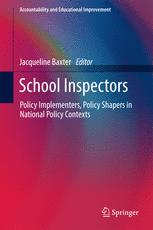

Most ebook files are in PDF format, so you can easily read them using various software such as Foxit Reader or directly on the Google Chrome browser.
Some ebook files are released by publishers in other formats such as .awz, .mobi, .epub, .fb2, etc. You may need to install specific software to read these formats on mobile/PC, such as Calibre.
Please read the tutorial at this link. https://ebooknice.com/page/post?id=faq
We offer FREE conversion to the popular formats you request; however, this may take some time. Therefore, right after payment, please email us, and we will try to provide the service as quickly as possible.
For some exceptional file formats or broken links (if any), please refrain from opening any disputes. Instead, email us first, and we will try to assist within a maximum of 6 hours.
EbookNice Team

Status:
Available4.4
17 reviewsThis book examines the role of the inspector within the context of a number of OECD member states and explores the ways in which the inspectors themselves interpret, implement and influence inspection practices and policy.
Inspection policy can have various unintended consequences, some of which produce radical discrepancies between the policy intent and its implementation. A number of these discrepancies derive from the way in which the policy is articulated while others derive from the ways in which inspectors interpret and operationalise this policy. This implementation is coloured and conditioned by several factors, including the evidence on which inspectors base their judgements; what counts as evidence in different policy contexts; what counts as valid knowledge in inspection processes; the qualities needed by inspectors working in differing policy contexts and the identities that they adopt in order to successfully carry out their work.The book provides a valuable contribution to our understanding of the politics and practices which colour and shape the legitimacy and operational execution of inspection policy. The work is unique in its focus on the inspectors’ role within the implementation of the inspection process— an element often overlooked in the literature. It also includes two chapters co-written by inspectors, offering unique insights into their life worlds and identities.